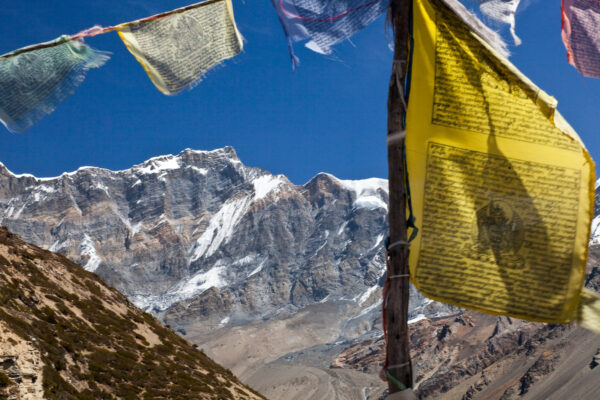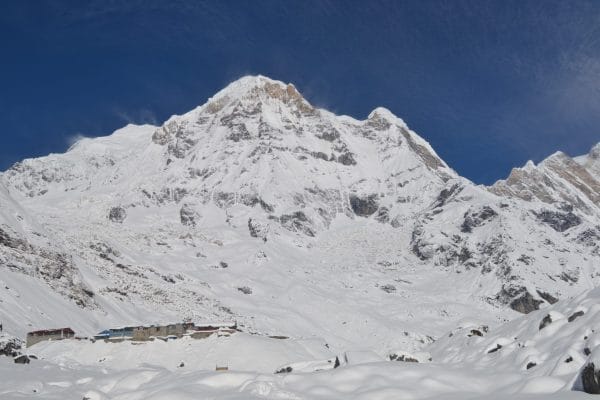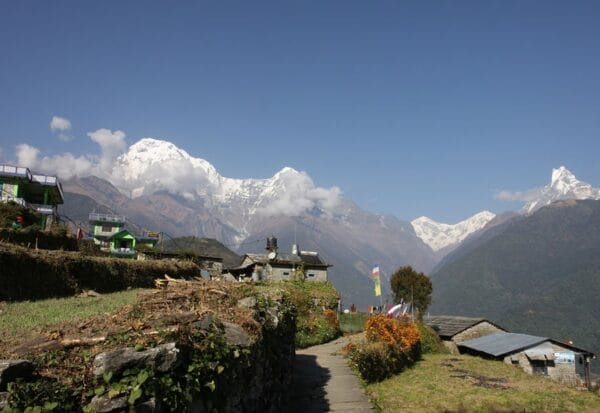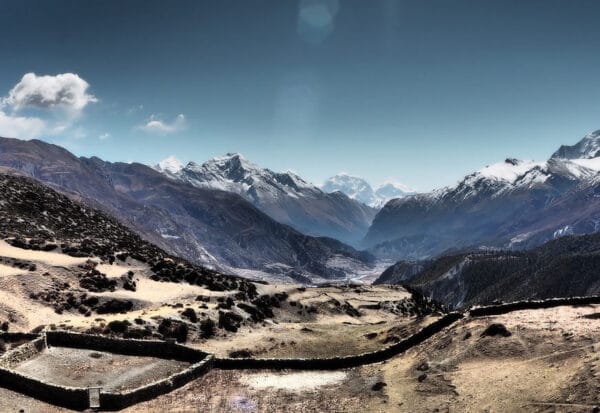Plan your Annapurna Circuit Trek 2025: Ultimate Guide & Itinerary
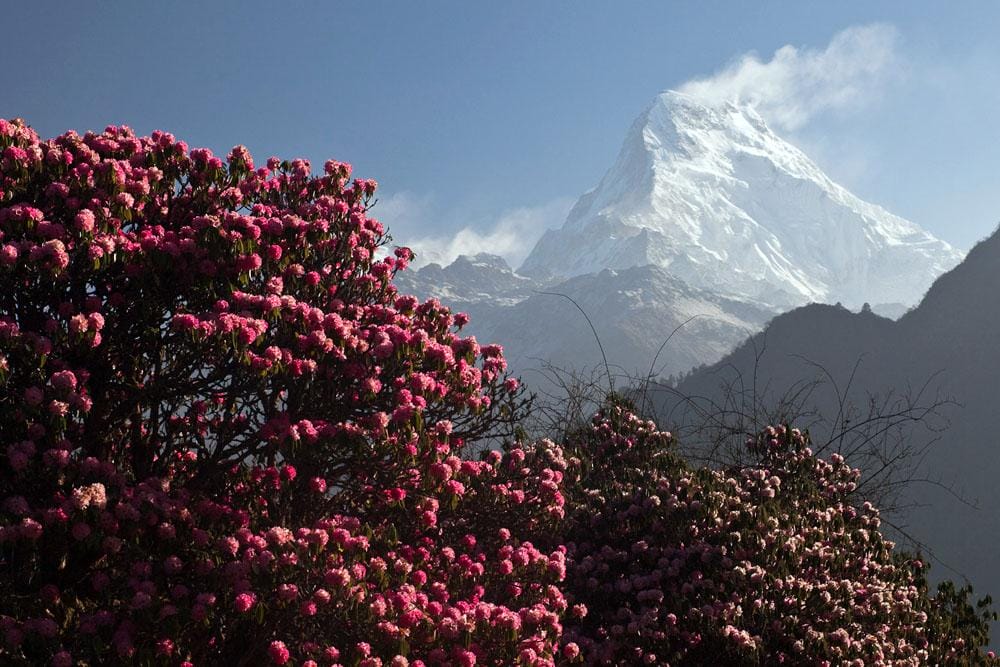
Annapurna Circuit Trek is Nepal’s most stunning and well known trek. It circles the breathtaking Annapurna mountain range in Nepal’s west.This trek is popular with tourists from all over the world. As the landscape unfolds, you’ll experience everything from rolling hills and rivers to thick forests and traditional settlements. With increased elevation, the surroundings become dry and rocky. The Annapurna Circuit Trek typically takes around 10 to 14 days, covering a distance of approximately 170 to 240 kilometers, depending on the route. Through the trek, you will adventure the cultural and natural riches of the Annapurna region.
Why the Annapurna Circuit Trek is a Must Do Trek
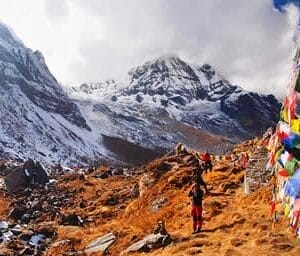
Annapurna Circuit Trek is Nepal’s, one of the best trekking destinations. It circles the breathtaking Annapurna mountain range in Nepal’s west. Here is why, thousands of trekkers came to this amazing Annapurna Circuit Trek. During this hike, you will pass through deserts, charming villages, and lush forests. Annapurna, Hiuchuli, Nilgiri, Macchapuchre, Tukuche Peak, Dhampus Peak, Dhaulagiri, and Ganesh Himal are among the other picturesque mountain vistas that you will witness. Besisahar, a village close to Kathmandu, Nepal, is where the 14 day trek around the Annapurna circuit starts.Charming villages like Bhulbhule, Jagat, and Dharapani will be traversed during the trek. One of the biggest attractions of the trek is reaching Thorong La Pass, the highest peak at 5416m.
During your trek, taking a break at the Poon Hill viewpoint and visiting Muktinath Temple is essential for getting used to the high altitudes. Spending a day in Manang is also necessary for living. This is a great opportunity to explore the local lifestyle, culture, ancient monasteries, Ghumbas, and meditation caves. Hence, Annapurna Circuit Trek is for you if you want to indulge in one of the best adventurous treks off the beaten path in Nepal.
Annapurna Circuit Trek Route Overview
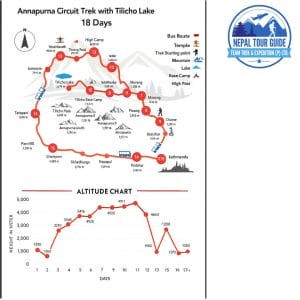
The Annapurna Circuit Trek is one of Nepal’s most well known and exciting trekking destinations, encircling the powerful Annapurna massif and winding through the north central Himalayas.This legendary trek traverses diverse landscapes—from subtropical valleys and terraced rice fields to rugged alpine ridges and the high-altitude desert of Thorong La Pass (5,416m). The climax? A jaw-dropping panorama of Annapurna, Dhaulagiri, and Manaslu from the world’s highest trekking pass. Along the way, rhododendron forests thin into windswept plateaus, where yaks graze under snow-capped giants. The scenery drastically changes as elevation rises, leading into the windswept, arid landscape of Manang, a stunning valley surrounded by high cliffs and hidden from view by Annapurna II and Gangapurna.
Beyond Manang, the climb intensifies—thin air at Yak Kharka (4,250m) gives way to Thorong High Camp’s (4,925m) icy, wind-scoured isolation.The trek’s ultimate challenge is crossing Thorong La Pass (5,416m), which rewards you with unbroken Himalayan views and the odd feeling that you are standing on the brink of two different worlds: the dry Mustang landscape and the lush Annapurna region.
The holy Muktinath Temple, a popular destination for Buddhists and Hindus alike, provides a singular cultural and spiritual experience as you descend into Muktinath (3,760m), where you will find relief from the heat. Jomsom and Tatopani are the next stops on the route, where you will pass through rocky, river-cut terrain before progressively returning to the wooded foothills. The trek will end in Pokhara, where the lush, subtropical landscape will greet you.
Difficulty Level and Preparation Tips at Annapurna Circuit Trek
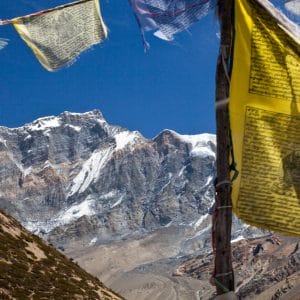
Trekkers who successfully complete the strenuous 5,416-meter climb to Thorong La Pass are rewarded with expansive views of the Dhaulagiri and Annapurna mountain ranges. Overall, the Annapurna Circuit offers breathtaking views and an opportunity to experience different cultures. However, for a successful and pleasurable experience, it is essential to comprehend the trek’s level of difficulty.
The Annapurna Circuit trek is graded as moderate to challenging, with several factors contributing to its difficulty:
1. High Altitude (Up to 5,416m at Thorong La Pass)
Altitude sickness is at Annapurna Circuit Trek a major queries, affecting even the fittest trekkers. Symptoms like headaches, nausea, and dizziness can occur above 2,500m. Proper habituation (climbing slowly, staying hydrated, and taking rest days) is crucial.
2. Long Duration & Daily Trekking (5–8 hours/day for 12–21 days)
The full Annapurna circuit trek spans 160–230 km, requiring endurance and stamina. The Thorong La Pass crossing (a 10–12 hour day) is the toughest segment due to steep, icy trails and unpredictable weather.
3. Varied Terrain
Trails range from lush forests to rocky, snowy paths, demanding strong ankles and good balance. Uneven surfaces and steep descents can strain knees trekking poles are highly recommended.
4. Unpredictable Weather
Conditions can shift rapidly, with snowstorms, rain, or scorching sun possible even in peak seasons (spring/autumn).
5. Remote & Basic Facilities
Teahouses at higher altitudes offer minimal amenities; cash and essentials (like medicines) must be carried.
Preparation Tips for the Annapurna Circuit Trek
Physical Training (Start 3–6 Months in Advance)
● Cardio & Endurance: Running, cycling, swimming, or stair climbing (aim for 1-hour sessions, 3–5 weeks).
● Strength Training: Focus on legs (squats, lunges) and core (planks) to handle long ascents/descents.
● Practice Hikes: Simulate trek conditions with multi-day hikes carrying a loaded backpack (10–15kg).
Acclimatization and Altitude Awareness
- Follow the “climb high, sleep low” principle.
- Carry Diamox (altitude medication) and recognize symptoms of AMS (Acute Mountain Sickness).
Gear & Packing Essentials
● Clothing: Layered clothing (thermal base, fleece, down jacket), waterproof shell, and sturdy ankle-support boots (broken in beforehand).
● Sleeping Bag: Rated for -10°C to -20°C for high-altitude nights.
● Other Gears: Trekking poles, headlamp, reusable water bottle, and high-SPF sunscreen.
Mental Preparation
- Expect fatigue and discomfort; mindfulness practices (yoga, meditation) help maintain motivation.
Logistics & Safety
● Permits: Annapurna Conservation Area Permit (ACAP) and TIMS card.
● Guides/Porters: Highly recommended for navigation and reducing physical strain.
● Travel Insurance: Must cover high-altitude rescue (up to 6,000m).
Best Time to Trek
● Spring (March–May): Clear skies, blooming rhododendrons
● Autumn (October–November): Stable weather, post-monsoon clarity
- Prevent landslides and severe cold during the monsoon season (June to September) and the winter season (December to February).
Permits & Documents for Annapurna Circuit Trek
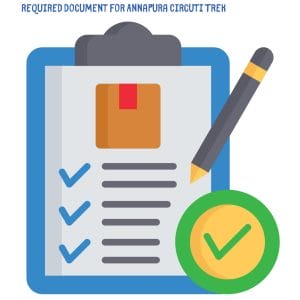
Annapurna Circuit trek permit is a compulsory requirement for those who wish to trek in the Annapurna region of Nepal. The permit is required to provide safety to the trekkers, protect the local environment and help in the local communities. The principal permit needed for the Annapurna Circuit Trek is the Annapurna Conservation Area Permit (ACAP). This permit helps the authorities to control tourism responsibly and limit the effects of the inspection to the environment. Entering the Annapurna Circuit without proper permits violates Nepalese law and risks serious consequences—you may face fines or be turned back at checkpoints. More critically, lacking official documentation means rescue teams won’t have your location records in emergencies, putting your safety at risk.
Annapurna Conservation Area Permit (ACAP) is a compulsory permit for all those trekkers entering the Annapurna Conservation Area (ACA). It provides access to the ACA which goes up to the entire trekking length.
The trek covers a broad region of the Annapurna Conservation Area. This conserved zone is quite large and encompasses the entire Annapurna Circuit trek. The ACA has a great diversity of landscape from subtropical forests to alpine grasslands and abundant animal and bird species. You are required to obtain the permit for Annapurna Circuit trek in order to ensure effective management of the region’s ecological and cultural heritage. The permit safeguards the native environment by limiting the number of trekkers, managing the environmental pressure and promoting conservation efforts.
This permit is applicable for the duration of your trek in the conservation area. It is usually issued for the number of days that you decide to trek in the Annapurna region and will also need to be shown at checkpoints along the route.
The Annapurna Conservation Area Permit (ACAP) costs:
-
Foreign nationals: NPR 3,000 (USD 22)
-
SAARC trekkers (Afghanistan, Bangladesh, Bhutan, India, Maldives, Pakistan, Sri Lanka): NPR 1,000 (≈USD 8)
The income acquired from the ACAP fee is spent on conservation activities like the maintenance of trails, monitoring of wildlife, sponsorship of community initiatives and maintenance of sustainable practices that help retain the area’s natural beauty and ecological integrity. Note: For more detail and update information you can visit to Department of National Parks and Wildlife Conservation
Accommodation and Food on Annapurna Circuit Trek
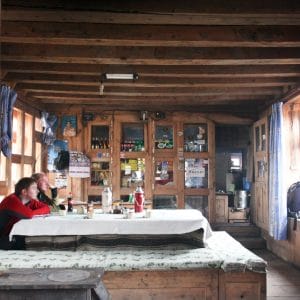
Annapurna region used to be a popular destination for camping treks. Today, trekkers enjoy comfortable lodging options along the Annapurna routes, with cozy tea houses, lodges, and homestays catering to hikers’ needs. While tea houses are plentiful along the Annapurna routes, peak season (October-November, March-April) demands advance bookings. Last-minute trekkers risk being relegated to dormitory-style sleeping in dining areas when lodges reach capacity.
1. Tea Houses
A teahouse is the most popular and traditional kind of accommodation on the trail. They are usually located in a smaller village along the hiking routes. A local owns a tea house, which is essentially a house with minimal rooms set aside for hikers to stay the night. These tea houses are available in a range of designs, from low-cost versions with basic amenities to more opulent versions with features like Wi-Fi and hot showers.
A room with twin beds, a shared restroom (usually with squat toilets), and communal dining rooms are standard amenities offered by teahouses. The atmosphere in the teahouse is friendly, and the owners are warm and inviting. In the tea houses, you can chat with other hikers, exchange stories, and learn about the state of the trail.
2. Lodges or Guesthouses
Although they are usually more expensive, lodges are cozier and larger than teahouses. Guest houses often serve Western food and offer private bathrooms and hot showers. They are typically located in larger towns or villages and may include extra amenities like free internet access. Certain lodges have room heating, which is a pleasant comfort on chilly evenings. The majority of these guest houses are situated in prime locations so you can take in the picturesque views of the mountains.
3. Homestays
Several villages in the Annapurna region like Ghandruk and Ghorepani have homestays in addition to lodges and tea houses. Homestays provide you the chance to fully experience traditional Nepali cultures. You’ll be staying at the villagers’ home with their family. Along with learning about the local way of life, you will also discover how the climate and geography impact day-to-day existence in the Himalayan villages.
4. Camping
A few daredevils who prefer a more conventional camping experience can even camp their way through the Annapurna journey. It may be more difficult to camp than to stay at a tea house as you have to carry all of your essentials along the way. So porters will be needed to help you carry the camping gear.
5. Food on Annapurna Circuit Trek
The Annapurna Circuit Trek offers a wide range of culinary options. Vegetarian selections are available, as well as international and regional cuisine. Meals are usually served at tea houses along the route.
Here’s a typical daily menu on the Trek to Annapurna Circuit.
6. Breakfast
The Trek to Annapurna Circuit breakfast options can vary depending on the teahouse you are staying at. The elevation also affects the choices of breakfast. You’ll typically find options for breakfast like porridge, toast with eggs or jam, pancakes, and Tibetan bread.
● Porridge: Sometimes with fruits or nuts.
● Pancakes: Plain, banana, apple, or chocolate.
● Toast or Tibetan Bread: With butter, jam, or honey.
● Eggs: Boiled, scrambled, fried, or omelette.
● Chapati or Paratha: Indian-style bread.
7. Lunch and Dinner
During the Annapurna Circuit Trekking in Nepal, lunch and dinner are essential for refuelling and hunger after a strenuous day of hiking. These meals offer a chance to replenish your energy with a balance of fats, proteins, and carbohydrates. Lightweight and local options are recommended because of the difficult trekking conditions. A variety of dishes fit for lunch and dinner are below:
- Dal Bhat: Dal Bhat is Nepal’s staple food. It consists of lentil soup, rice, vegetables, and sometimes meat (chicken or mutton).
- Noodles: For a satisfying meal, prepare fried noodles, noodle soup, or thukpa (Tibetan noodle soup) with veggies and protein.
- Momo: Momos are another popular Nepali dish. They are dumplings filled with vegetables, cheese, or meat, steamed or fried.
- Curry: Vegetable or meat curries with rice or chapati. Local vegetables are used to make curry, which is tasty and full of vitamins and minerals.
- Pizza and Pasta: Simple versions made with local ingredients.
- Fried Rice: With vegetables or meat.
Best Time to Travel Annapurna Circuit Trek
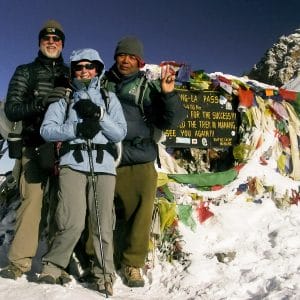
Autumn (September–November)
September to November is autumn in the Himalayas, with October being the best time for the Annapurna Circuit trek. The monsoon clears the air, leaving dust-free trails. This is peak season, so tea houses—especially in Manang—get busy. November offers fewer crowds but colder days and nights.
Winter (December–January)
December is possible for trekking, but January brings heavy snowfall, often blocking Thorong La Pass. Trekkers must prepare for extreme cold and potential route delays or detours.
Spring (February–April)
February to April features warmer days and blooming rhododendrons. This quieter season is a great alternative to autumn, with clear skies and pleasant temperatures.
Pre-Monsoon (May–June)
May is warm but risky due to pre-monsoon rain. June marks the start of monsoon season, bringing lush greenery but obscured mountain views and landslide risks.
Monsoon (July–August)
Torrential rains cause flooding and landslides, especially in lower sections. While the landscape turns vibrant green, Himalayan vistas are often hidden behind clouds.
Packing List and Gear Guide
- Pack many high energy snacks, like energy bars, nuts, and dried fruit. These will help you maintain your energy levels all day
- Sip a lot of water. Staying hydrated is essential, particularly at higher elevations
- Keep altitude sickness in mind. An inability to eat can result from altitude sickness. Try eating fewer, more frequent meals if you begin to feel ill
- If you have any dietary needs, inform your lodges beforehand
- Most teahouses expect you to eat where you stay
How Cold does it get on the Annapurna Circuit?
he Annapurna Circuit experiences extreme temperature swings across seasons and altitudes. In winter, daytime temperatures average 5-10°C but plummet to -20°C or lower at high elevations and nighttime. Summer brings milder 15-23°C conditions at lower altitudes (<2,500m), though temperatures still drop below 10°C above 4,000m – with the Thorong La Pass (5,416m) often remaining below freezing even in warmer months.
Annapurna Circuit Trek Packing list?

The Annapurna Circuit’s extreme temperatures demand foolproof gear:
✔ Bombproof hiking boots – your feet face everything from river crossings to ice
✔ 4-season waterproof shell – sudden snowstorms and sideways rain are guaranteed
✔ Goose-down jacket (-20°C rated) – thin air at Thorong La means brutal windchill
A fake-brand sleeping bag picked up on a backpacking route won’t cut the mustard in the Himalayas.
Plastic water bottles are risky in freezing terrain. A high-quality insulated metal flask prevents this, keeping your water drinkable for hours.
The same goes for food. Dinner may be four times as expensive up the mountain, once the roads have ended, as you would have paid in Kathmandu. Here is a bullet pointed list of what to bring on the Annapurna Circuit:
Clothes
● Waterproof jacket
● Mid weight down jacket
● Waterproof trousers
● Lightweight trekking trousers
● Hiking shorts
● Thermals (top and bottom, merino ideal)
● 3-4 trekking t-shirts/shirts
● Fleece or warm mid-layer
● Waterproof thick gloves
● Glove liners
● Hiking socks and lighter walking socks
● Wool hat
● Sun hat
● Spare underwear
● Buff or similar
Shoes
● Worn in waterproof hiking boots
● Lightweight trainers (for the evenings)
● Flip-flops or sandals
Sleeping
● 4-season sleeping bag
● Sleeping bag liner
● Pillow case (optional)
Other
● Trekking poles
● Travel towel
● Sun protection (sunscreen, and sunglasses)
● 2 water bottles (1 litre each)
● Metal SIGG bottle (useful to fill with hot water to use as a hot water bottle at bedtime)
● Headtorch
● First aid kit and/or personal medication
● Water purification tablets/system
● Hand gel
● Biodegradable wet wipes
● Small biodegradable bags to take toilet tissue off the mountain
● Toilet paper/tissues
● 1 x passport photo for trek permit
● Powerbank
● Universal plug adaptor
● Book/kindle/cards for downtime
Winter departures only
Annapurna Circuit Trek is Nepal’s most stunning and well known trek. It circles the breathtaking Annapurna mountain range in Nepal’s west.This trek is popular with tourists from all over the world.
Along the way, you’ll encounter breathtaking landscapes—lush forests, roaring waterfalls, and traditional villages. As you ascend, the terrain shifts to rugged, rocky expanses and arid highlands.
The Annapurna Circuit Trek typically takes around 10 to 14 days, covering a distance of approximately 170 to 240 kilometers, depending on the route. Through the trek, you will adventure the cultural and natural riches of the Annapurna region.
Annapurna Circuit Trek FAQs
1. Why is the Annapurna Circuit Trek a must‑do trek in Nepal?
The Annapurna Circuit Trek is one of the most scenic and culturally rich treks in Nepal.
2. How long does Annapurna Circuit trek take?
It takes 10 to 14 days
3. What is the best time to trek the Annapurna Circuit trek?
Ideal seasons are autumn (September–November) and spring (March–May), featuring stable weather, clear skies, and vibrant scenery like the rhododendron blooms.
4. What permits are required in Annapurna Circuit trek ?
You must obtain:
- Annapurna Conservation Area Permit (ACAP): NPR 3,000 ( USD 22) for foreign trekkers, NPR 1,000 (≈ USD 8) for SAARC nationals.
- TIMS Card: (Trekkers’ Information Management System).
These are essential and are checked at various checkpoints along the route.
5. What are the accommodation options for the Annapurna Circuit trek ?
- Tea Houses: Simple accommodations with dining areas, shared bathrooms, and twin beds.
- Lodges/Guesthouses: More comfortable, often with private baths, Western food, Wi‑Fi heating.
- Homestays: Authentic Nepalese hospitality in villages like Ghandruk and Ghorepani.
6. What food can you expect along the trail?
Common meals include:
- Breakfast: Porridge, pancakes, eggs, Tibetan bread.
- Lunch/Dinner: Dal bhat, momos, noodles, fried rice, curry, pasta—vegetarian and non‑veg options available.
7. How difficult is the Annapurna Circuit Trek?
It’s classified as moderate to challenging. Challenges include:
- High altitude (Thorong La Pass at 5,416 m).
- Long daily hiking (5–8 hours).
- Varied terrain: forested trails, rocky ridges, alpine deserts.
- Unpredictable weather: sudden snow, rain, or sun.
Proper acclimatization and fitness training are vital.
8. How should I prepare for the Annapurna Circuit trek ?
Preparation steps:
- Physical Training: Cardiovascular endurance (running, cycling), strength training, and practice hikes with a loaded pack.
- Acclimatization: Follow “climb high, sleep low”; consider altitude meds like Diamox.
- Gear: Sleeping bag (between 10°C and 20°C), trekking poles, waterproof shell, sturdy broken-in boots, headlamp, high-SPF sunscreen, and layers of clothing.
- Mental Readiness: To develop mental resilience, practice yoga, meditation, or mindfulness.
- Logistics: As part of your logistics, you’ll need to arrange ACAP and TIMS permits, ensure travel insurance with altitude coverage, and possibly hire porters or guides.
- What is the highest altitude reached of Annapurna Circuit Trek ?
The highest altitude is 5416 m at the Thorang La Pass - How cold is Annapurna Circuit Trek ?
It can drop to -20°C at higher elevations of the Annapurna Circuit, even in summer.
RELATED TRIPS
Annapurna Balcony Trek Your Complete Guide to Stunning Views
The Annapurna Balcony Trek is one of those journeys that will remain etched in one's memory because it goes...
Annapurna Base Camp Trek
Embark on a unique trek that takes you past lush green forests, picturesque villages and terraced farmlands overlooking glacier...
Annapurna Sanctuary Trek
The Annapurna Sanctuary trek takes you into the heart of the Annapurna Himalaya and fulfills every traveller's desires. ...
Annapurna Circuit Trial
Annapurna Circuit has long been praised by travellers as the holy grail of trekking since it was first opened...

